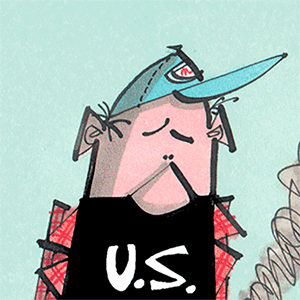After dodging Florida's Hialeah annexation, this historically Black neighborhood wants to be a city
Published in News & Features
More than a year after efforts to annex parts of Brownsville into Hialeah failed, the historically Black community and three other neighborhoods are taking steps to become a city.
Brownsville Civic Association president Kenneth Kilpatrick said the Hialeah annexation was a “wake up call” for residents living in the unincorporated north central area of Miami-Dade County. Organizations for neighborhoods that are adjacent to Brownsville, the Gladeview Homeowners & Civic Association, the Twin Lakes/North Shore Gardens Association and the Gratigny Homeowners Association, are joining Brownsville to explore the possibility of incorporating.
“Obviously the city of Hialeah is not the only municipality that wants to bite out of Brownsville and other areas in the unincorporated area that’s contiguous with Brownsville,” Kilpatrick, a fervent critic of the attempted annexation, told the Miami Herald. “It’s a wake up call again to figure out if we want to do something and control our own destiny.”
The effort was championed earlier this month when Miami-Dade County District 2 Commissioner Marleine Bastien introduced legislation allowing the North Central Dade Municipal Advisory Committee (MAC), a group initially formed in 2001, to conduct a feasibility study as to whether it’s conducive for the communities to become a city. The feasibility study would be the first step to the lengthy process of incorporation, but will help determine if the area has the tax base to thrive as a city, Kilpatrick said.
The city of Hialeah hired an engineering firm to conduct a feasibility study of its own back in early 2023 to determine if annexing 150 acres of Brownsville would generate revenue for the city, el Nuevo Herald reported at the time. The study, prepared by The Corradino Group, indicated that “the annexation area will provide fiscal strength to the city by increasing its tax base and allowing for significant creation of employment opportunities.”
The proposed area included two mobile home parks, Blue Bell and Carley Trailer Park, but according to the report less than 50% of the proposed area was residential therefore, no referendum was needed from residents to incorporate. Needless to say, the response from the Brownsville community was overwhelming. Angry residents crowded into Hialeah city council meetings voicing their discontent and a few weeks later, Hialeah backed away from the idea.
Residents of the neighborhood, however, were mobilized. Being annexed to Hialeah didn’t seem ideal, but they began to question the quality of services their area was receiving from the county as well.
“I think this is about a much broader, bigger picture,” Kilpatrick said. “This is (about) the overall quality of life, all the resources, all the tax dollars coming back to your neighborhood, you get an improved outlook on everything. So, we’re looking to really upgrade the quality of life overall.”
Estelle Barr, president of the Gladeview Homeowners & Civic Association, said she first grew concerned about the annexation of her neighborhood after hearing about the attempt on Brownsville last year. She began attending the Brownsville Civic Association meetings and supporting them and their efforts against annexation.
She’s hoping incorporating addresses issues such as illegal dumping, overgrown lots and other nuisances. But more importantly, she’s concerned about development in the neighborhood and homelessness in the area.
Barr said the Gladeview civic association joined in on the incorporation efforts in part because of love of community. “There is strength in numbers, and we all have the same goals and ideas,” she said.
Vanessa Woodard Byers, president of the Twin Lakes/North Shore Gardens Association, echoed Barr’s sentiments, saying they’re concerned about the services being provided to residents and development. Byers also noted that homes in their neighborhood are being used as short-term rental properties.
“A lot of our homes in our neighborhoods are really income properties for people,” she said. “[The owners] don’t necessarily live in the neighborhood. So there’s not the buy-in that we had some time ago,” she said. “That leads to a lot of what we’re experiencing regarding the dumping and things of that nature [and] crime.”
“If people don’t feel a part of the area, and they don’t necessarily care about what happens in the area, we’ve got to find a way for everybody to understand that the community is big,” she continued. “This is our community. I think a big problem is that a lot of people don’t understand that the citizens basically run the community, at least we have that power.”
Should this come into fruition, Kilpatrick estimated there could be 80,000 residents in the newly formed city.
A public hearing is tentatively scheduled for Jan. 14, 2025 before the County Infrastructure, Operations and Innovations Committee to discuss conducting the feasibility study and gain community feedback.
©2024 Miami Herald. Visit at miamiherald.com. Distributed by Tribune Content Agency, LLC.






Comments